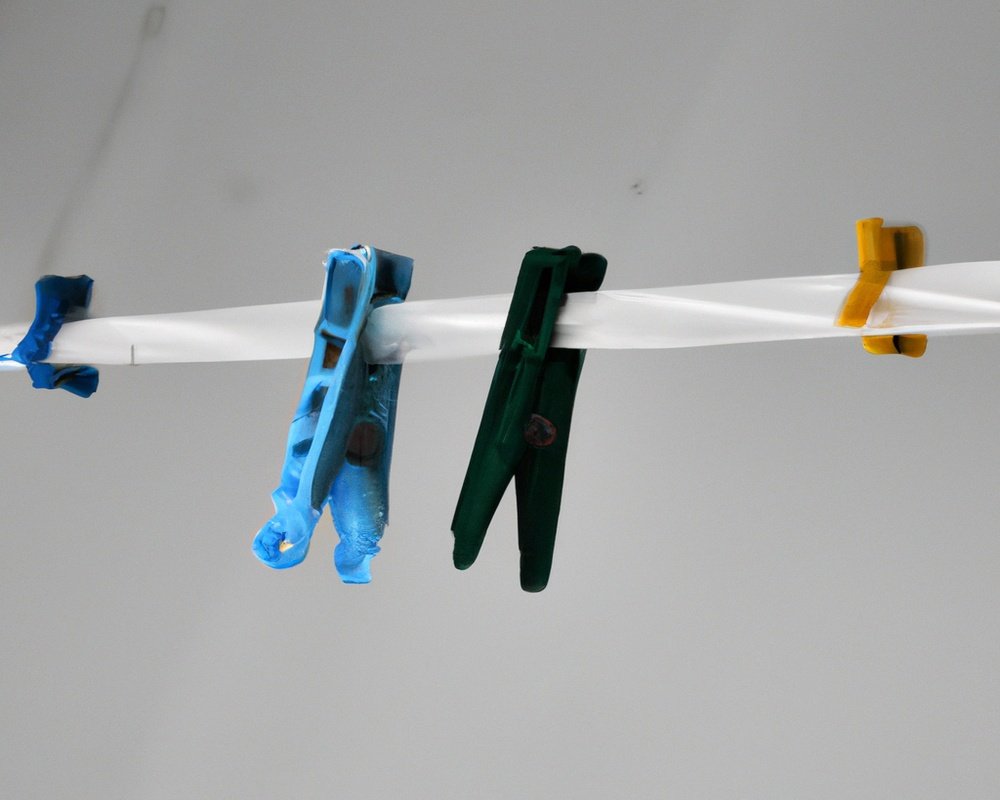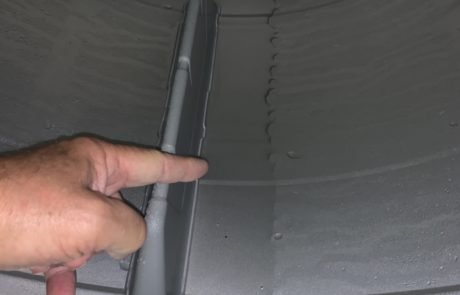Indoor Line Drying – Your Ultimate Laundry Solution!
Key Takeaways:
- Indoor line drying can help reduce energy consumption and lower utility bills.
- By using indoor line drying, you can extend the lifespan of your clothes and prevent shrinkage.
- Indoor line drying can improve indoor air quality by reducing the use of dryer sheets and chemicals.
- Implementing indoor line drying can contribute to a more sustainable lifestyle by reducing reliance on electric dryers.
Are you tired of relying on expensive and energy-consuming dryers to get your clothes dry? What if I told you there’s a more eco-friendly and cost-effective alternative?
Indoor line drying is making a comeback, and for good reason.
It not only saves energy and reduces utility bills but also keeps your clothes fresh and fragrant. Plus, it helps preserve the quality of your clothing, making them last longer.
And the best part?
You don’t need tons of outdoor space to do it. In this article, I’ll share essential supplies, tips for effective indoor line drying, and address common challenges to make your experience a breeze.
So, whether it’s a rainy day or you simply prefer the charm of line-dried clothes, indoor line drying has got you covered.
| Pros | Cons |
| 1. Saves energy costs | 1. Takes longer to dry clothes |
| 2. Reduces carbon emissions | 2. Can cause humidity in the house |
| 3. Preserves clothes’ quality | 3. Requires adequate space |
| 4. Helps reduce wrinkles | 4. Limited drying capacity |
| 5. No risk of fading from sunlight | 5. Requires additional setup time |
Benefits of Indoor Line Drying
Indoor line drying offers several benefits including saving energy and reducing utility bills, keeping clothes fresh and fragrant, preserving clothing quality, and eliminating the need for outdoor space.
Saves Energy and Reduces Utility Bills
One major benefit of indoor line drying is that it saves energy and reduces utility bills. When you hang your laundry indoors, you eliminate the need for a dryer, which uses a significant amount of energy.
By air drying your clothes, you’re not only being environmentally friendly but also saving money on your electricity bill.
It’s a simple and effective way to reduce your energy consumption and lower your overall utility costs.
Keeps Clothes Fresh and Fragrant
Keeps Clothes Fresh and Fragrant: One of the great benefits of indoor line drying is that it keeps your clothes fresh and fragrant.
Hanging your clothes indoors allows them to air dry naturally, which helps retain their natural scent and prevents any musty odors that can sometimes occur with machine drying.
Additionally, indoor line drying can help reduce the use of harsh chemicals found in fabric softeners and dryer sheets, which can cause skin irritation for some people.
So, not only will your clothes smell wonderful, but they’ll also be gentler on your skin.

Helps Preserve Clothing Quality
Preserving the quality of your clothing is important, and indoor line drying can help with that. When you hang your clothes indoors, you avoid the potential damage caused by outdoor elements like sunlight, strong breezes, and dust.
Indoor line drying also reduces the risk of fading or shrinking that may occur with machine drying.
By gently drying your clothes indoors, you can extend their lifespan and keep them looking their best. Plus, it’s a sustainable option that saves energy and money.

Eliminates the Need for Outdoor Space
Indoor line drying is a great option because it eliminates the need for outdoor space.
This means that even if you live in a small apartment or don’t have access to an outdoor area, you can still dry your clothes indoors.
You don’t have to worry about finding a place to hang your laundry or dealing with unpredictable weather conditions.
It’s a convenient and hassle-free way to dry your clothes, right in the comfort of your own home.
Plus, it reduces your dependence on energy-consuming dryers, helping you save on electricity bills and minimize your environmental footprint.
So if you’re looking for an efficient and space-saving solution, indoor line drying has got you covered.
No need to stress about outdoor space anymore!

Essential Supplies for Indoor Line Drying
To successfully dry your clothes indoors, you will need a drying rack, clothespins or hangers, and drying mesh or netting.
Drying Rack Options
There are several options for drying racks that work well for indoor line drying.
Here are a few to consider:
- Folding Drying Rack: These racks typically have multiple tiers that can be folded up and stored away when not in use. They provide ample space for hanging clothes and are easy to set up.
- Wall-Mounted Drying Rack: If you have limited floor space, a wall-mounted rack might be a good option. These racks can be attached to a wall and folded down when needed. They are great for drying smaller items like socks and underwear.
- Over-the-Door Drying Rack: This type of rack hangs over the back of a door and provides extra drying space without taking up valuable floor or wall space. It is especially useful for small apartments or laundry rooms.
Remember to choose a drying rack that fits your available space and drying needs.
Clothespins and Hangers
Clothespins and hangers are essential supplies for indoor line drying. Clothespins securely hold garments on the line, preventing them from falling.
Look for sturdy ones made of durable materials like wood or plastic.
Hangers are great for drying delicate clothes or preserving their shape. Opt for non-slip hangers to keep garments in place.
With clothespins and hangers, you can efficiently and effectively dry your laundry indoors.
Drying Mesh or Netting
Drying mesh or netting is a helpful tool for indoor line drying.
It provides a stable surface for clothes to dry on while allowing air to circulate, preventing dampness and musty odors.
Some benefits of using drying mesh or netting include:
- Even drying: The mesh helps distribute weight and allows for even drying of garments.
- Space-saving: Mesh or netting can be hung vertically, maximizing the use of vertical space in your home.
- Versatility: You can use the drying mesh or netting for various items, such as delicate clothing, socks, or even small items like lingerie or baby clothes.
Remember to choose a sturdy and durable mesh or netting material.
It should be able to withstand the weight of wet clothes without sagging.
Additionally, make sure to clean and maintain the mesh regularly to prevent any build-up of lint or debris.
Tips for Effective Indoor Line Drying
To effectively dry your clothes indoors, find the best spot, ensure good airflow, rotate clothing, and use the right amount of clothes.
Find the Optimal Location
To find the optimal location for indoor line drying, consider these factors.
Firstly, choose a room with good airflow, like near a window or balcony.
Position the drying rack away from walls and furniture to maximize air circulation.
Secondly, think about sunlight exposure.
Locate the rack where it will receive the most sunlight during the day for faster drying.
Lastly, assess the space available.
Ensure the location allows room for the rack to fully expand and accommodate your laundry.
Maximize Airflow
To maximize airflow while indoor line drying, here are a few helpful tips:
- Choose a spacious area: Find a larger space where you can hang your laundry with some distance between the clothes.
- Use a fan: Place a fan near your drying area to enhance air circulation.
- Open windows and doors: If weather conditions permit, open windows and doors to let fresh air in and improve airflow.
- Utilize overhead fans: If you have ceiling fans, turn them on to create a continuous breeze.
- Avoid overcrowding: Make sure not to overcrowd your drying space, as this can restrict airflow.
Remember, proper airflow is essential for drying clothes efficiently and preventing dampness.
So, try these tips to maximize airflow and achieve quicker drying times.
Rotate and Rearrange Clothes
To ensure effective indoor line drying, it is important to rotate and rearrange clothes regularly.
This helps to ensure that all sides of the clothes receive equal air circulation, allowing them to dry faster and more evenly.
By rotating and rearranging the clothes, you can also prevent them from developing wrinkles or stiffness.
I recommend dividing your drying space into different sections and moving each piece of clothing to a new section every few hours.
This simple tip can greatly improve the drying efficiency of your indoor line drying setup.
Use the Right Amount of Clothing
When using an indoor line drying rack, it’s important to use the right amount of clothing.
If you overcrowd the rack, the air won’t be able to circulate properly, which means your clothes will take longer to dry.
On the other hand, if you don’t put enough clothing on the rack, you’re not maximizing its capacity.
So, find a balance and make sure to leave enough space between each item for good airflow.
This will help your clothes dry faster and more efficiently.
Dealing with Indoor Line Drying Challenges
Dealing with indoor line drying challenges can be tricky, but with a few tips and tricks, you’ll be able to manage moisture, prevent odor, and make the most of limited drying space.
Managing Moisture and Humidity
Managing moisture and humidity indoors is essential for maintaining a comfortable and healthy living environment.
Here are a few tips to help you keep moisture levels in check:
- Ventilate your space: Ensure proper airflow by opening windows or using exhaust fans in humid areas like bathrooms and kitchens.
- Use a dehumidifier: Consider investing in a dehumidifier to remove excess moisture from the air. Empty the water reservoir regularly to keep it running efficiently.
- Fix leaks promptly: Leaky pipes or faucets can contribute to high humidity levels. Repair any leaks as soon as possible to prevent further moisture accumulation.
- Dry clothes properly: If you’re drying clothes indoors, make sure to do it in a well-ventilated room or utilize a dehumidifier to prevent excess moisture from being released into the air.
- Monitor indoor plants: Some plants release moisture through transpiration, which can increase humidity levels. Be mindful of the number and placement of your indoor plants.
Handling Limited Drying Space
Handling limited drying space can be a challenge, but there are a few strategies you can try. Utilize vertical space by using hangers or a clothes rack that can be hung from the ceiling or door.
Another option is to use foldable drying racks or drying nets that can be easily stored when not in use.
Consider using a designated drying area, such as a laundry room or bathroom, and invest in products like retractable clotheslines or wall-mounted drying racks. Being creative and finding efficient ways to maximize your space is key!
Frequently Asked Questions about Indoor Line Drying
Can I dry any type of clothing indoors?
Absolutely! You can dry most types of clothing indoors, but there are a few things to keep in mind. Firstly, always check the care label on your clothes to see if they have specific drying instructions.
Some delicate fabrics may need to be air-dried or laid flat.
Secondly, it’s important to provide adequate ventilation when drying clothes indoors to prevent moisture buildup and mold growth. Open windows, use fans, or consider using a dehumidifier if necessary.
Thirdly, avoid drying clothes directly on wooden surfaces or sensitive materials that could be damaged by moisture.
Instead, use a drying rack, clothesline, or even a shower rod.
How can I prevent clothes from getting stiff when line drying indoors?
To prevent clothes from getting stiff when line drying indoors, there are a few simple steps you can follow.
First, make sure to shake out your clothes vigorously before hanging them up.
This will help loosen any fabric fibers that may have become stiff during washing.
Additionally, consider using a fabric softener during the wash cycle or adding a vinegar rinse to your laundry routine.
Both of these options can help soften your clothes as they dry.
Lastly, avoid over-drying your clothes by removing them from the line while they are slightly damp.
How long does it take for clothes to dry indoors?
Indoor drying time depends on various factors such as humidity, temperature, and fabric thickness.
On average, it can take anywhere between 24 to 48 hours for clothes to dry indoors.
Thicker fabrics like jeans or towels may take longer, while lighter fabrics like t-shirts may dry faster.
Consider using a dehumidifier or opening windows to improve air circulation and speed up drying time.
Don’t forget to check for any signs of dampness before folding and putting away your laundry.
Can I line dry my clothes indoors during the winter?
Yes, you can line dry your clothes indoors during the winter. Here are a few things to keep in mind.
First, make sure you have enough space indoors to hang your clothes and allow them to fully dry.
You can use a drying rack or clothesline inside your house. Next, choose a well-ventilated area to prevent excess moisture buildup.
It’s also a good idea to place your clothes near a heat source, like a vent or radiator, to speed up the drying process.
Lastly, be patient, as drying times may be longer compared to outdoor drying.
Final Verdict
Indoor line drying offers numerous benefits that make it an excellent alternative to outdoor drying.
It saves energy and reduces utility bills, keeps clothes fresh and fragrant, and helps preserve clothing quality.
With the right supplies and proper techniques, indoor line drying can be efficient and effective.
However, it is important to address challenges such as managing moisture and humidity, preventing odor and mildew, and dealing with limited drying space.
By following these tips and guidelines, you can successfully dry your clothes indoors and enjoy the advantages it brings.
So, why not give indoor line drying a try and experience the convenience and savings it offers firsthand?







